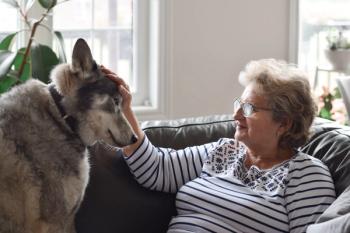
EBITDA FTW!
This business acronym is a crucial metric for every veterinary practice owner or manager.
EBITDA: It's made of money. (Shutterstock.)EBITDA (ee-bit-DAH) isn't a fancy French word or the name of a Star Wars character. It's an accounting term, and a darned important one at that. Why? Because EBITDA is essentially your profit, and your profit determines the value of your practice today-and when the hospital is sold in the near or distant future.
EBITDA stands for Earnings Before Interest, Taxes, Depreciation and Amortization. This isn't how you precisely calculate this, but without an accounting degree you can get a pretty good idea this way:
*Costs of goods sold, payroll, payroll taxes, payroll benefits, facility and equipment repair and maintenance costs, general and administration costs, marketing, and such fee-income expenses as merchant fees, bank charges and collection fees.
A good practice should have an EBITDA of at least 12 percent, but most veterinary hospitals operate closer to 5 to 8 percent. This means that most practices are essentially breaking even-or taking a loss-for the year.
Now, you may be thinking that because your practice grosses a large amount of money, it's automatically more appealing to a potential buyer. You would be wrong. If you spend everything you make, that's not appealing at all. Here's a hypothetical example:
• Practice A has a net revenue of $20,000 left over at the end of the year.
• Practice B has a net revenue of $400,000.
With that information alone, one might assume that Practice B is more profitable. However, when you consider that Practice A only grossed $100,000 for the year and Practice B grossed $2 million, you realize that both would be considered equally profitable, as both are operating at 20 percent EBITDA.
If you calculate your EBITDA and discover that it's lower than you'd like, you can either decrease expenses or increase revenue (although I recommend doing both). There's a lot of information out there on industry standards for expenses and income per profit center, so take some time and compare notes.
Set a goal and monitor your success bimonthly or monthly. There will be some ebb and flow, but keeping a close eye on this number gives you another tool for finding the pulse of your practice-and could put you in a better financial position when the hospital is ready to change hands.
Katie Adams, CVPM, is director of curriculum development at veterinary education provider Ignite Veterinary Solutions based in Austin, Texas.
Newsletter
From exam room tips to practice management insights, get trusted veterinary news delivered straight to your inbox—subscribe to dvm360.






